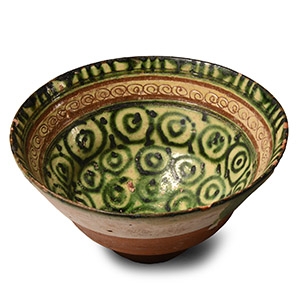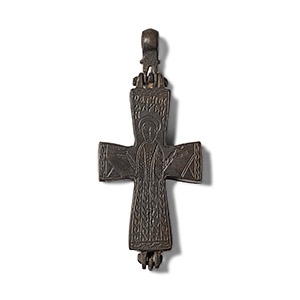Home > Auctions > 5 - 9 December 2023
Ancient Art, Antiquities, Natural History & Coins
Auction Highlights:
Acquired early 1990s.
Ex private American collection; thence by descent.
Private Swiss collection since 1998.
Cf. Chadour, A.B., Rings. The Alice and Louis Koch Collection, volume I, Leeds, 1994, item 142, for type.
Acquired 1980-2015.
Ex Abelita family collection.
Acquired early 1990s.
Ex private American collection; thence by descent.
Private Swiss collection since 1998.
Cf. Chadour, A.B., Rings. The Alice and Louis Koch Collection, volume I, Leeds, 1994, item 103.
The inset glass bezel is probably archaic Greek or Etruscan and reused in Roman times. The traits of the man point to Archaic Hellenic features, especially the oval eyes and the long hair, and the pointed beard reminiscence of the Achaean heroes.
Acquired early 1990s.
Ex private American collection; thence by descent.
Private Swiss collection since 1998.
Cf. Chadour, A.B., Rings. The Alice and Louis Koch Collection, volume I, Leeds, 1994, item 303, for type.
Acquired on the German art market before 2000.
Property of a Surrey, UK, collector.
Cf. Ruseva-Slokoska, L., Roman Jewellery, Sofia, 1991, item 232, for type.
From a private collection formed in the 1990s.
Ex London, UK, gallery.
Cf. Marshall, F.H., Catalogue of the Jewellery, Greek, Etruscan and Roman, in the Department of Antiquities, British Museum, London, 1911, item 2587, for type.
Found whilst searching with a metal detector near Great Chart with Singleton, near Ashford, Kent, UK, by Mr Keith Collins on Thursday 5th November 2020.
Accompanied by a copy of the British Museum's Portable Antiquities Scheme (PAS) report with record no.KENT-2D4C88.
Accompanied by a copy of the British Museum's report on a find of potential treasure for H M Coroner with Treasure reference 2021T808, subsequently disclaimed.
See Guiraud. H., Bagues et Anneaux a l'Epoque Romaine en Gaule, in Gallia, vol.46, 1989.
Roman rings with circular hoops are categorised by Guiraud (1998) in her typology as Type 4, those with tubular bezels Types 4a- 4d, Type 4c is shown flanked by two pairs of spherical pellets, and with decorative shoulders (p.189, fig.29), however our example is more consistent with Type 4h.
Private European collection since the 1950s.
Private collection, UK, 2010.
Cf. Ross, M.C., Catalogue of the Byzantine and Early Mediaeval Antiquities in the Dumbarton Oaks Collection, Volume 2: Jewelry, Enamels and Art of the Migration Period, Washington, 2005, item XIV(F) and XCVII(I), for type.
French gallery, Paris, 1990s.
From a family collection.
Accompanied by an academic report by Dr Raffaele D'Amato.
This lot has been checked against the Interpol Database of stolen works of art and is accompanied by search certificate number no. 11921-209564.
See Boito, C., Architettura Cosmatesca, Torino, 1860; Hutton, E., The Cosmati, The Roman Marble Workers of the XIIth and XIIIth Centuries, London, 1950; Tosca, P., Storia dell’Arte Italiana, il medioevo, vol. III, Torino, 1965; Glass, D., Studies on Cosmatesque Pavements, BAR Publishing, London, 1980; Matthiae, G., 'Componenti del gusto decorativo cosmatesco,' in Rivista dell'Istituto Nazionale di Archeologia e Storia dell'Arte, vol. I, 1952, pp.249-281; Cigola, M., 'Mosaici pavimentali cosmateschi. Segni, disegni e simboli,' in Palladio, Nuova serie, anno VI n. 11, Giugno, 1993, pp.101-110; Grant, L. & Mortimer, R. (eds.), Westminster Abbey. The Cosmati Pavements, Courtauld Research Papers no.3, 2002.
A similar pattern to the current panel can be seen on the cosmatesques of the Grottaferrata Abbey, near Rome, variously dated between the 1160 and 1282 A.D., which can be a good chronological indicator for our mosaic for style and composition. The Cosmatesque style was a characteristic type of ornamentation of Eastern Roman origin (opus alexandrinum) in the technique of opus sectile (elements already cut with the final shape: circles, squares, triangles and lozenges; small geometric elements which, expertly fitted together, manage to create the effect of a magnificent embroidered carpet) used by marble-makers of the 12th and 13th centuries A.D. The practice of inlaying glass and stone tesserae into white marble panels in this way, although reaching its zenith under the directorship of the Cosmati, had already been established in the Eastern Roman Empire for at least five centuries, and by the 12th century many marble pavements and panels of Opus Alexandrinum had been used to decorate prestigious churches and religious foundations, both across Italy and further afield, often by reusing old Roman monuments.
Ex old English collection.
London art market, pre 2000.
Property of a Lonodon, UK, gentleman.
Acquired on the German art market before 2000.
From an EU collection before 2020.
See Pitarakis, B., Les Croix-Reliquaires Pectorales Byzantines en Bronze, Paris, 2006, for discussion.
From a German collection.
Acquired from Germany in 2010.
Ex London, UK, collection.
Accompanied by an academic report by Dr Raffaele D’Amato.
This lot has been checked against the Interpol Database of stolen works of art and is accompanied by search certificate number no.11928-209561.
Cf. Mendel, G., Catalogue des sculptures grecques, romaines et byzantines, Constantinople, 1914, nos.722-723 (2398-2249), vol.II, pp.519-520; 1174 (823) p.417; Grabar, A., L’etá d’oro di Giustiniano, (The Golden Age of Justinian), Milan, 1966, figs.255, 288, 296; for an item in similar style, but with a simple cross and leaves, see also the Metropolitan Museum of Arts, accession no.10.175.89.
This monumental sculpture was probably affixed at the top of a church façade, a type of decoration also used in the Western Romanesque art during the Middle Ages (see the sculpted Chi Rho monogram at the Monastery of San Juan de la Pena, Spain). The presence of letters alpha and omega shows a powerful link with the Christian cult, especially as the two letters are incised beside the Chi Rho. These letters are symbols of eternity of Jesus: in the final verses of the Bible, Jesus describes himself as the Alpha and the Omega, the Beginning and the End (Revelation, 22.13).
121 - 132 of 2409 LOTS

.jpg)


.jpg)

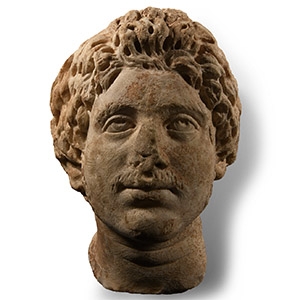
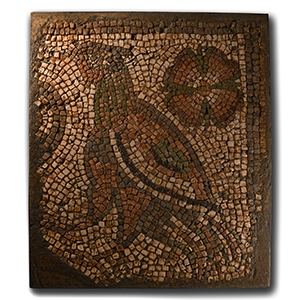
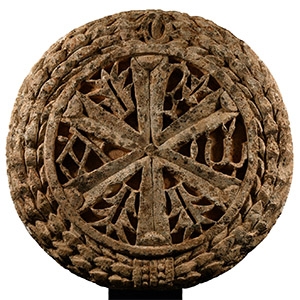


.jpg)


.jpg)
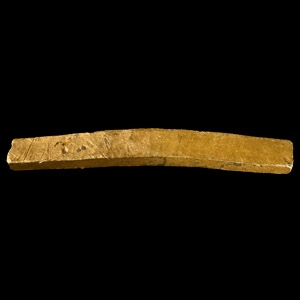
.jpg)
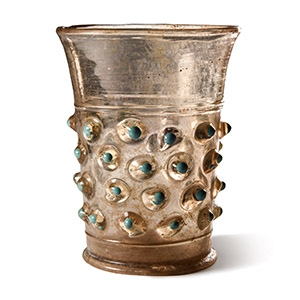

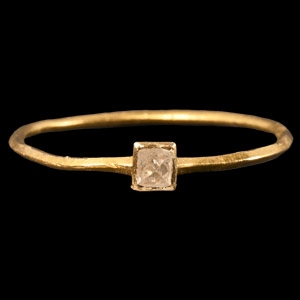

.jpg)
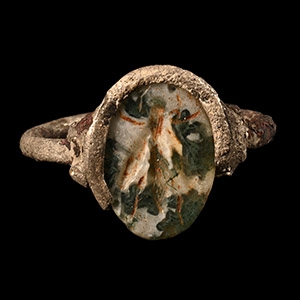
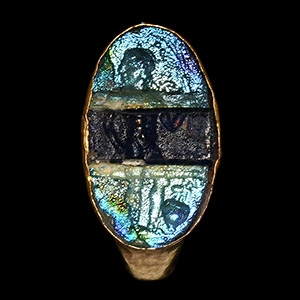
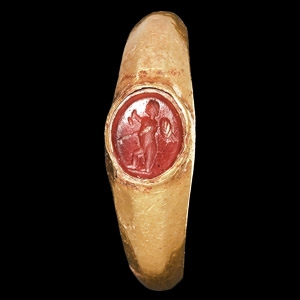
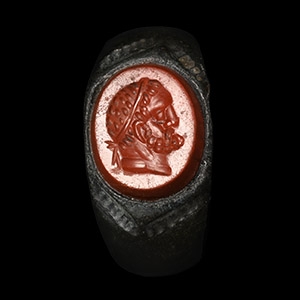

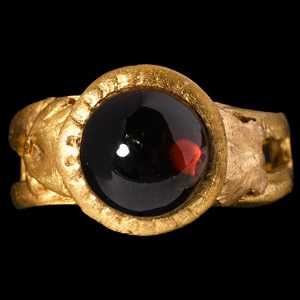
.jpg)

